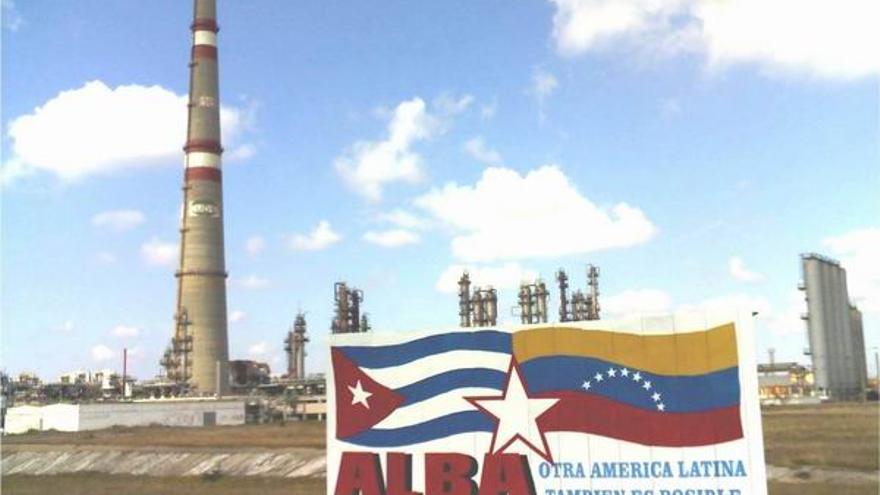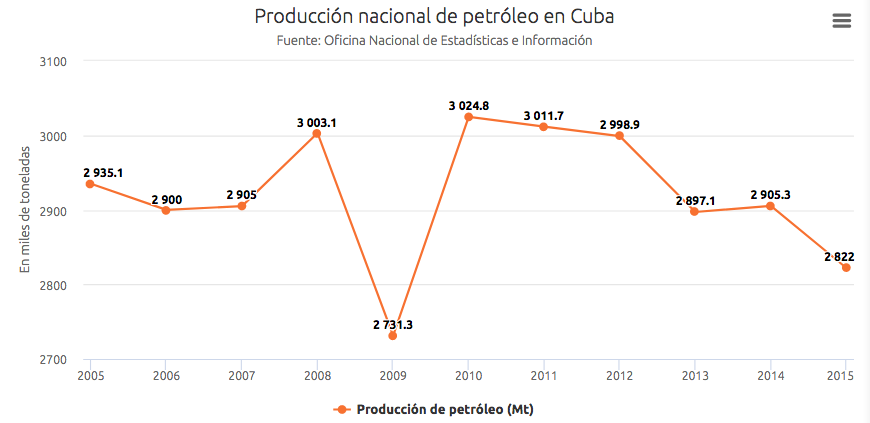
![]() 14ymedio, Mario Penton, Miami, 19 December 2017 — It was December 2007 when Hugo Chávez, in the company of Raúl Castro and a dozen Caribbean leaders, celebrated the PetroCaribe summit in Cienfuegos. For this city of 200,000 that Fidel Castro wanted to turn into the industrial heart of the country, the reactivation of the Camilo Cienfuegos refinery, paralyzed since its construction in 1989, was a reason for rejoicing.
14ymedio, Mario Penton, Miami, 19 December 2017 — It was December 2007 when Hugo Chávez, in the company of Raúl Castro and a dozen Caribbean leaders, celebrated the PetroCaribe summit in Cienfuegos. For this city of 200,000 that Fidel Castro wanted to turn into the industrial heart of the country, the reactivation of the Camilo Cienfuegos refinery, paralyzed since its construction in 1989, was a reason for rejoicing.
“Cienfuegos and its refinery is a jewel. A jewel that serves as a stimulus for those who doubt, serves as an example for those who fear. We are not living in times of fear, we are not living in a time of doubts. This is an example,” said Chávez in his inaugural speech.
In those days, thousands of people took to the streets spontaneously to receive a fiery Venezuelan president, political heir of the convalescent Fidel Castro, with pockets full of petrodollars to build what the Soviets had left halfway done.
“We are going to set up a large petrochemical hub here to boost agriculture, development, and food production,” said Chavez. Ten years and more than one hundred million dollars later, there is only one semi-paralyzed and unprofitable industry in Cienfuegos and, as reported this week, even Venezuela’s 49% shares in the industry have been absorbed by the Cuban side as of August, as payment for Caracas’s debt in arrears*.
“For months, we had feared that this would happen [the total transfer to the Cuban side]. The situation of the refinery was very unstable because we received hardly any crude oil from Venezuela. We even processed crude from Algeria, but the minimums for which the industry was created were not reached,” a plant engineer explained to 14ymedio.
According to official reports, Camilo Cienfuegos is refining some 24,000 barrels a day, instead of the 65,000 barrels for which it was designed. This situation is due to the fact that Venezuela, as a result of its internal crisis and its decrease in oil production, has not been able to fulfill its commitments towards Cuba. At the end of October, Venezuela extracted a little more than 1.8 million barrels per day, while in 2015 production exceeded 2.3 million barrels.
Cuban petroleum production has also decreased, from 3 million barrels in 2011 to 2.8 million according to the latest data provided by the Government.

“Venezuela made a large investment in the refinery, which was aimed at creating a petrochemical hub for the Caribbean, and Cienfuegos was going to be the center for sending Venezuelan fuel to the whole basin, but those are projects of the past,” says the engineer, who traveled on several occasions to Venezuela for training courses at the state oil company PDVSA.
All this happened at a time when the price of a barrel of oil was between 80 and 120 dollars. Those were boom years in Venezuela. There was even talk of a joint investment project of 5.4 billion dollars to expand the refining capacity of Camilo Cienfuegos to 165,000 barrels of oil a day, the start-up of a supertanker base in Matanzas and the reactivation of the pipeline between both ports.
Among the industries that were projected for La Perla del Sur were petrochemical, fertilizer and paint factories. Studies were done to dredge and expand Jagua Bay’s entrance channel to adapt it to the increase in maritime traffic that was estimated to grow between 67% and 169%. There was also a plan to build a base for supertankers on the outskirts of the bay, but the projects were frustrated when the price of oil collapsed.
“The refinery is not profitable without the planned investments and it would cost more then 5 billion dollars for that and right now it does not seem that anyone wants to invest,” explains the engineer, who affirms that even allied countries such as China have given up trying.
“So far the workers of the Cuven-Petrol company earn the same salaries and bonuses as previously, but we do not know how long that can last,” he adds, worried. The factory staff totals 1,049 employees.
The executive director of the Russian state company Rosneft, Igor Sechin, said Monday in Havana that his company is interested in studying participation in the modernization of the Cienfuegos refinery, but the engineer does not believe that this initiative will materialize.
“Cienfuegos has inherited three white elephants from the era of Soviet industrial gigantism, all made in the 1980s: the Juraguá thermonuclear plant, the refinery and the cement factory. They were projected as pillars of the development of the country, but today they offer more headaches than benefits.”
*Translator’s note: In exchange for oil, Cuba sends Venezuela doctors and other professionals, including a large contingent involved in State Security.
—————
The 14ymedio team is committed to serious journalism that reflects the reality of deep Cuba. Thank you for joining us on this long road. We invite you to continue supporting us, but this time by becoming a member of 14ymedio. Together we can continue to transform journalism in Cuba.
